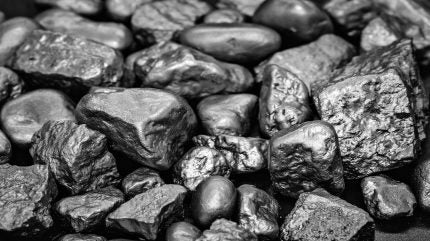Sign up for daily news updates from CleanTechnica on email. Or follow us on Google News!
The executive director of the International Energy Agency (IEA) made headlines recently when he wrote “demand for each of the three fossil fuels is set to hit a peak” before 2030 in the Financial Times. Meanwhile, at the recent World Petroleum Congress meeting in Calgary, oil and gas industry insiders were telling each other lies about an increase in demand.
That’s an interesting pair of bookends. Looking back on the past decades, the IEA has been more noted for its dismissal of renewables and electric cars and its oil-soaked perspectives than for being at the other end of the spectrum from industry opinion. Fatih Birol has been fighting to transform and update the institution since taking over eight years ago, and clearly he’s succeeding. Their annual renewables updates with flatlining renewables projections are no longer the source of global mirth, as a clear example.
Certainly, the opinions of the assembled backslappers in Calgary are unsurprising. If peak oil, gas, and coal demand is actually upon them, and demand starts going down, the value of their proven reserves, their debt rating, and their market valuations will all be in free fall. They have to pretend that the emperor is wearing fine clothes as opposed to a thick coating of oily sludge.
But there’s a way to tell where the world is going, and that’s to look at data from the biggest pockets of the future you can find. That’s a key part of my analysis and projection process, which I ascribe to William Gibson, a brilliant author and aphorist. His Blue Ant series is best summed up by his phrase, “the future is already here, it’s just unevenly distributed.”
In recent years, that’s meant I’ve been spending a lot of time looking at what China is doing. In 2014, I started my series of looking at how wind and solar scale vs. nuclear in that massive natural experiment. Results? Wind and solar are growing exponentially, nuclear growth is a flat line, so the experiment tells us that with equal prioritization, an equal national strategy, an equal ability to move capital, an equal ability to build megaprojects, and a bunch of other eliminated confounding factors, renewables scale a lot faster than nuclear. That’s an important finding because it should be informing climate and energy policies for every country in the world.
Similarly, on road transportation, I’ve taken to pointing out there are around 1.1 million electric trucks and buses on the roads of China with very rigorous duty cycles in every topographical and meteorological extreme, and under 10,000 registered fuel cell vehicles. A massive scaled experiment has been run, and fuel cells lost badly.
Rail electrification? Only India is ahead of China’s 72% electrified high-speed freight and passenger rail. Inland shipping? China is launching a 1,000 km electric route with 700-container ships powered by containerized batteries. Iron and steel? China makes as much as the rest of the world combined.
It’s worth looking at what China does, because whatever wins there will be extremely likely to win everywhere. It’s not like Chinese businesses and people run under different economic, scientific, and cognitive realities. Chinese businesses still have to make money, empirical reality is still empirical reality, and Chinese people are just people. If the test case of 1.4 billion people in a country the geographic size of the USA with the second biggest economy in the world shows a clear winner, there’s no reason to believe that other countries will vary except out of obstinance. Being stubborn and holding your breath doesn’t work for 4-year-olds, never mind national economies.
And so, let’s get to the 4-year old oil and gas industry insiders in Calgary who will try to respond to some news out of China by sticking their fingers in their ears and yelling la la la la la la.
Sinopec just announced that 2023 marks peak gasoline demand in China.
What is Sinopec? Merely the world’s largest oil refining, gas, and petrochemical conglomerate, wholly owned by the Chinese state, and the supplier of a rather absurd percentage of China’s fossil fuels. It approaches being the Chinese oil and gas industry, so in general it knows what it is talking about.
Given that 45% of every barrel of oil turns into gasoline, that means China has reached peak petroleum demand. China has an oil demand of approaching 13 million barrels per day, compared to USA’s 20 million and Europe’s 19 million. Between these economies, they represent a full half of global oil demand. Bloomberg has pointed out that peak gasoline and diesel demand has already arrived in the USA and Europe.
Diesel and gasoline represent 74% of every barrel of oil and half of the world’s demand has already peaked. Electric cars, trucks, and buses are growing in sale and use rapidly. Every fleet is shifting rapidly. Outside of the USA, rail is electrifying rapidly. Smaller commercial vessels are powering through the waves of rivers, lakes, and short sea journeys with batteries.
It’s not like there’s going to be massive uptick in deep water shipping to suck up all that oil. 40% of bulk shipping is for bulk coal, oil, and gas, and with peak fossil fuels, that’s peak bulk shipping as well. That segment is going to be collapsing in the coming years, as I’ve discussed with major shipping clients in Europe and Malaysia in the past few months as they try to figure out what to do with their ships, resources, and expertise.
There is no world where the most developed economies turn the corner to electric vehicles and the rest of the world radically expands their internal combustion fleets. No, the rest of the world will electrify as well. For example, Lagos in Nigeria has reached an agreement to buy 12,000 electric buses from Chinese bus giant Yutong. According to at least one source, there are fewer than 5,000 buses in the country today. This isn’t a fossil fuel growth market.
Half of the world’s economy has already reached peak gasoline and diesel demand while electric vehicle deliveries in every segment are shooting through the roof.
Another data point. A couple of months ago, mining giants Rio Tinto, BHP, and FMG all announced within a couple of weeks of each other that they were going to be going with battery electric and catenary overhead electric for all of their heavy mining vehicles. When heavy mining vehicles in remote areas are all going electric, there is no road demand that won’t electrify.
In case anyone is wondering, substances that are legal in Canada and hence might have been legally consumed at the World Petroleum Congress by all the attendees do not cause hallucinations or delusions. No, the industry insiders were providing their own hallucinatory brain chemicals through the power of motivated thinking and denial.
But what about coal! Everyone keeps pointing out that China is building more coal plants. Surely that’s good news for the fossil hydrocarbon industry? Well, no. China has been building new highly efficient plants, sunsetting inefficient plants, and running their coal fleet under 50% of the time. They are keeping the lights on with coal during high-demand periods as they rapidly drive up electricity demand.
And cement and steel demand for coal is plummeting. China has mostly finished its massive infrastructure buildout. It has all the cities it needs, and has stopped building new ones. It has built 40,000 km of high-speed electrified rail since 2007, but only plans to build another 10,000 km in the coming years. It’s built virtually all of the subways its cities need. It’s not building massive new roads between cities because that’s what the rail is for. Domestic demand for cement and steel is dropping, and China makes its cement and steel with coal.
I spent some recently digging through the Lantau Group’s projection of peak Chinese coal demand next year in 2024, and talking with lead author David Fishman. The Lantau Group is an Asian energy-focused consultancy, and Fishman reads Chinese governmental and industry reports in their native Mandarin because he studied Chinese in three universities inside and outside of the country before focusing his career on it. As I noted to him, it’s remarkably hard to find detailed information about what’s going on in China unless you read the language because they don’t bother to translate 99.99% of their material for the convenience of the West.
Wither goest oil and coal, so goeth natural gas. It’s headed for a cliff too. Birol thinks this decade. I’ve been saying mid-2030s for a while. But you know, when the IEA is betting on it being sooner, it’s probably time to take their side. Among other things, heat pumps are eating building energy demand for natural gas and renewables are eating natural gas generation demand. It’s just vastly more efficient to use electricity from wind and solar directly, and as weird taxation that favored fossil fuels over electricity goes away and carbon is priced, the cliff is coming soon.
But none of this empirical reality was allowed to spoil the party in Calgary. They all got together in circles and congratulated themselves on being in a growth industry, jointly hallucinating a climbing road into the future instead of accepting that they were driving over the edge of a cliff.
Have a tip for CleanTechnica? Want to advertise? Want to suggest a guest for our CleanTech Talk podcast? Contact us here.
EV Obsession Daily!
I don’t like paywalls. You don’t like paywalls. Who likes paywalls? Here at CleanTechnica, we implemented a limited paywall for a while, but it always felt wrong — and it was always tough to decide what we should put behind there. In theory, your most exclusive and best content goes behind a paywall. But then fewer people read it!! So, we’ve decided to completely nix paywalls here at CleanTechnica. But…
Thank you!
Tesla Sales in 2023, 2024, and 2030
CleanTechnica uses affiliate links. See our policy here.





